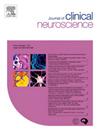Outcomes of surgically managed brainstem cavernous Malformations: A systematic review and Meta-Analysis
IF 1.8
4区 医学
Q3 CLINICAL NEUROLOGY
引用次数: 0
Abstract
Background
Brainstem cavernous malformations (BSCMs) are rare vascular lesions that can cause significant neurological deficits due to their critical location. This systematic review and meta-analysis aims to synthesize the available evidence on the hemorrhage rates, risk factors, and clinical outcomes of BSCMs to guide clinical decision-making.
Methods
A comprehensive literature search was performed in PubMed, Scopus, Medline for articles published from 1986 to June 2024. Studies reporting on the clinical outcomes of BSCMs were included. Data on patient demographics, hemorrhage rates, risk factors, and outcomes were extracted and analyzed using random-effects meta-analysis models.
Results
A total of 81 studies involving 4046 patients with BSCMs were included. The annual hemorrhage rate was 4.67 % per patient-year, with a rehemorrhage rate of 34.44 % per year. At diagnosis, 31 % of patients presented with motor deficits, 51 % with cranial nerve palsies, and 2.05 % with respiratory dysfunction. Surgical intervention was performed in all cases, with 65.38 % of patients achieving a favorable outcome (modified Rankin Scale score ≤ 2). However, early postoperative morbidity and mortality rates remained significant at 11.53 %. A significant risk factor for increased rates of post-operative morbidity and mortality was male sex and rates of post-operative morbidity and mortality were found to significantly decrease from 1990 s till early 2020 s.
Conclusion
BSCMs carry a substantial risk of hemorrhage and neurological morbidity. While surgical intervention can provide favorable outcomes for selected patients, the risks and benefits must be carefully weighed on an individual basis as there is still considerable risk of post-operative hemorrhage. Further prospective studies are needed to refine risk stratification and management strategies for BSCMs.
手术治疗脑干海绵状血管瘤的结果:系统回顾和荟萃分析
脑干海绵状血管瘤(BSCMs)是一种罕见的血管病变,由于其关键位置,可导致严重的神经功能障碍。本系统综述和荟萃分析旨在综合有关BSCMs出血率、危险因素和临床结果的现有证据,以指导临床决策。方法在PubMed、Scopus、Medline中检索1986年至2024年6月发表的文献。纳入了报道BSCMs临床结果的研究。提取患者人口统计学、出血率、危险因素和结局的数据,并使用随机效应荟萃分析模型进行分析。结果共纳入81项研究,涉及4046例BSCMs患者。年出血率为4.67% /患者年,再出血率为34.44% /患者年。在诊断时,31%的患者表现为运动障碍,51%表现为脑神经麻痹,2.05%表现为呼吸功能障碍。所有病例均行手术治疗,65.38%的患者预后良好(改良Rankin量表评分≤2分)。然而,术后早期发病率和死亡率仍然很高,为11.53%。术后发病率和死亡率增加的一个重要危险因素是男性,从1990年代到2020年代初,术后发病率和死亡率显著下降。结论bscms有出血和神经系统疾病的风险。虽然手术干预可以为选定的患者提供有利的结果,但必须仔细权衡个人的风险和收益,因为仍然存在相当大的术后出血风险。需要进一步的前瞻性研究来完善bscm的风险分层和管理策略。
本文章由计算机程序翻译,如有差异,请以英文原文为准。
求助全文
约1分钟内获得全文
求助全文
来源期刊

Journal of Clinical Neuroscience
医学-临床神经学
CiteScore
4.50
自引率
0.00%
发文量
402
审稿时长
40 days
期刊介绍:
This International journal, Journal of Clinical Neuroscience, publishes articles on clinical neurosurgery and neurology and the related neurosciences such as neuro-pathology, neuro-radiology, neuro-ophthalmology and neuro-physiology.
The journal has a broad International perspective, and emphasises the advances occurring in Asia, the Pacific Rim region, Europe and North America. The Journal acts as a focus for publication of major clinical and laboratory research, as well as publishing solicited manuscripts on specific subjects from experts, case reports and other information of interest to clinicians working in the clinical neurosciences.
 求助内容:
求助内容: 应助结果提醒方式:
应助结果提醒方式:


